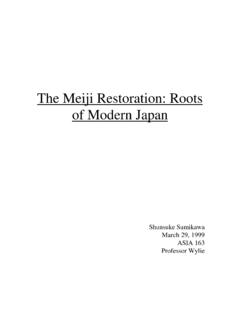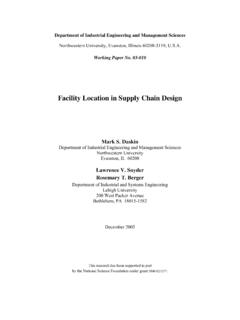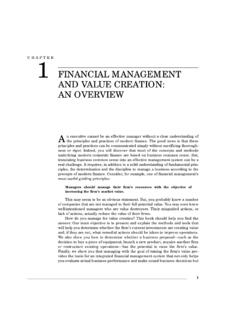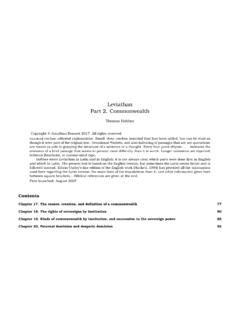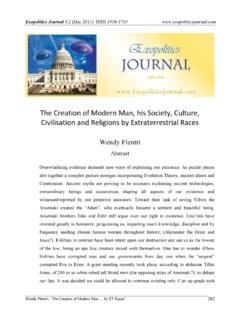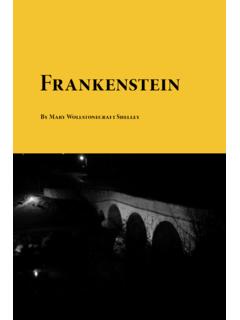Transcription of The Meiji Restoration: The Roots of Modern Japan
1 The Meiji restoration : Rootsof Modern JapanShunsuke SumikawaMarch 29, 1999 ASIA 163 Professor WylieIntroductionThe start of the Meiji Era and the beginning of Japan s road to modernization,started when the 16 year old emperor Mutsuhito selected the era name Meiji for his period commenced with the collapse of the Tokugawa Shogunate and led to Japan stransformation from a feudal nation into a Modern industrial state. Japan emerged fromthe Meiji Period with a parliamentary form of government and as a world power throughmilitary expansion abroad. The Meiji regime first began as an alliance between Satsumaand Choshu, the two domains responsible for the overthrowing of the TokugawaShogunate, with support from Tosa and Hizen domains as well. Satsuma and Choshufaced the daunting task of imposing and maintaining national unity. From January 1868 toJune of 1869, the new Meiji government was involved in a civil war with the fragmentedTokugawa and dissident forces.
2 The Tokugawa forces eventually were defeated and theformer shogunate capital of Edo, was renamed Tokyo and designated as the new coming to power, the Meiji government wanted to ensure the people that thenew order would be of justice and opportunity. The emperor on April 6, 1868 issued theCharter Oath, which promised that assemblies would be established to deal with allmatters through public discussion and that evil feudalistic customs of the past would beabolished. There were early attempts to implement the assemblies and publicdiscussions mention in the Charter Oath, but before long the regime reverted to a moreauthoritarian structure. However, the boundaries between the social classes weregradually broken down, and reforms led to the establishment of human rights and religiousfreedom in introduced its first constitution in 1889, based the European style.
3 Aparliament, called the Diet was established, while the emperor was placed as the sovereignfigure head. The emperor stood at the top of the army, navy, executive and legislativepowers. The ruling elder statesmen (genro) however held the actual power to run thestate. Political parities at this time did not yet gain real power due to the lack of unityamong the members of parliament. In order to stabilize the new government, the formerfeudal lords (daimyo) were required to return their land to the emperor in 1870. Thereturn of land to the central government allowed the collection of land tax to be moreextensive and allowed the people to own their own land. This led to the restructuring ofthe country into prefectures that is currently still in implementation to this Meiji government reformed the education system after the French and laterafter the German system.
4 Among those reforms the most significant and lasting was theintroduction of a compulsory education system. After about one or two decades ofintensive westernization, a revival of conservative and nationalistic feelings took place:principles of Confucianism and Shinto including the worship of the emperor wereincreasingly emphasized and indoctrinated at the educational Japan , catching up militarily was a high priority in an era of European andAmerican imperialism. This attitude was driven by the humiliating and unequal treatiesJapan was forced to oblige to due to their military inferiority compared to the West. TheMeiji government introduced universal conscription and a new army was modeled after thePrussian force and a navy after the British order to transform the economy from an agrarian one to a developed industrialstate, Japanese scholars went abroad to study Western science and language, while foreignexperts taught in Japan .
5 The government also invested heavily in public works such asrailroad transportation and communication networks. It also directly supported theprospering industries, especially the powerful family owned businesses, called huge expenditures to industrialize led to a financial crisis in the mid 1880 s thatresulted in reforms of the currency and banking during the Meiji period was involved in two victorious wars. Conflicts ofinterests in Korea between Japan and China, led to the Sino-Japanese War in was to receive Taiwan and other territories from China, but was forced to return theterritories by the intervention of the Western powers. About a decade later, new conflictsover Korea between Japan and Russia resulted in the Russo-Japanese War in 1904. TheJapanese army surprised the world and gained respect in their victory over a Meiji rule ended with the death of the emperor on July 30, 1912, which alsomarked the end of the era of the genro.
6 This era in Japanese history was a momentousepoch that saw the transformation of feudal Japan into a Modern industrialized state with aparliamentary form of government and its emergence as a world power through militaryadventures The Meiji period brought about drastic political, economic, andsocial changes in Japan , which in turn became the framework and foundation of modernJapan as we know of the ShogunateIn July of 1853, Commodore Matthew C. Perry arrived in Japan with the demandthat Japan open its country to foreign trade with the United States. The Tokugawashogunate realizing that resisting with force was impossible, and had no alternative but tosign the Kanagawa Treaty with the United States in 1854. The Kanagawa Treaty openedthe ports of Shimoda and Hakodate to foreign ships for supplies and repairs, but did notinclude provision for trade.
7 This was just the beginning of a series of treaties theshogunate was forced to sign with the Western powers seeking trade with Japan . Theseunequal treaties all favored the foreign counterpart, as the treaties gave extraterritorialrights as well as the power to set Japanese tariff levels. The opening of Japan and the wayin which the treaties were agreed upon seriously weaken the shogunate s already the opening of Japanese ports in 1859, the wave of anti-foreign sentimentswept the nation. Foreign presence in these ports gave way to the creation of sloganssuch as Expel the Barbarians! iii At this critical juncture, the shogun, Tokugawa Iesadadied childless creating a succession dispute. Furthermore, his ineffective replacement, IlNaosuke was assassinated in March 1860 by a group of loyalist from Satsuma. Thesituation was fast becoming an impossible one for the shogun.
8 The numbers of Westernsin the treaty ports were increasing, and serious clashes occurred between the reactionaryfeudal lords and the foreigners. Foreigners were frequently attacked and occasionallykilled by rebellious samurai who thought they were aiding in the expulsion. The Westernpowers demanded of the shogun a severe punishment of the ferocious daimyos, but theshogun had no power to do so. On one hand, the shogun had orders of the emperor toexpel the foreigner. However, the shogun could not comply, for he knew that he waspowerless against the cannons of the foreign gunboats. Nor did he dare to refuse point-blank the emperor s orders, for such an insult to the legal head of the state would not foreign minister had at first been ignorant of the true nature of the relationbetween the shogun and the emperor. They had regarded the shogun as the supreme rulerof the land and the emperor as a kind of high priest.
9 In the course of time they discoveredtheir mistake and when time for a renewal of a treaty, they went to the emperor. Sir HarryParkes, the British Minister requested the immediate opening of the port at Osaka and areduction of custom duties. Terrified by the show of force, the emperor reluctantlyaccepted the treaty. This incident finally made it apparent the complete failure of theshogunate government, thus leading to the overthrow of Tokugawa shogunate by the newMeiji ChangesSoon after the restoration of the emperor to power, the new government promisedthe people it would establish a constitutional government. In 1889, the JapaneseConstitution was declared and various liberties and rights of the people, beginning with theright to political participation, were recognized. A year later in 1890, a national assembly,the bicameral Diet, was assembled and the constitutional government was formed.
10 Theformer samurais of the Tokugawa period, who in the Meiji took the role as elderstatesmen (genro) understood that the adoption of a Constitutional government wasessential if Japan was to become a country strong and wealthy enough to rank with theWestern powers. Accordingly, it devoted all its energies to achieving such a Meiji Constitution borrowed from the constitution of the European nations,specifically the German states. The 1889 Constitution was largely the work of ItoHirobumi, a Choshu man who had studied abroad in Europe. The constitution investedthe emperor with full sovereignty, he commanded the military, made peace and declaredwar, and dissolved the lower house of the parliament when elections were power however lay with the genro, but the genro s power was vaguely defined inthe Constitution for it seemed to contradict with the emperor s total sovereignty of thenation.
